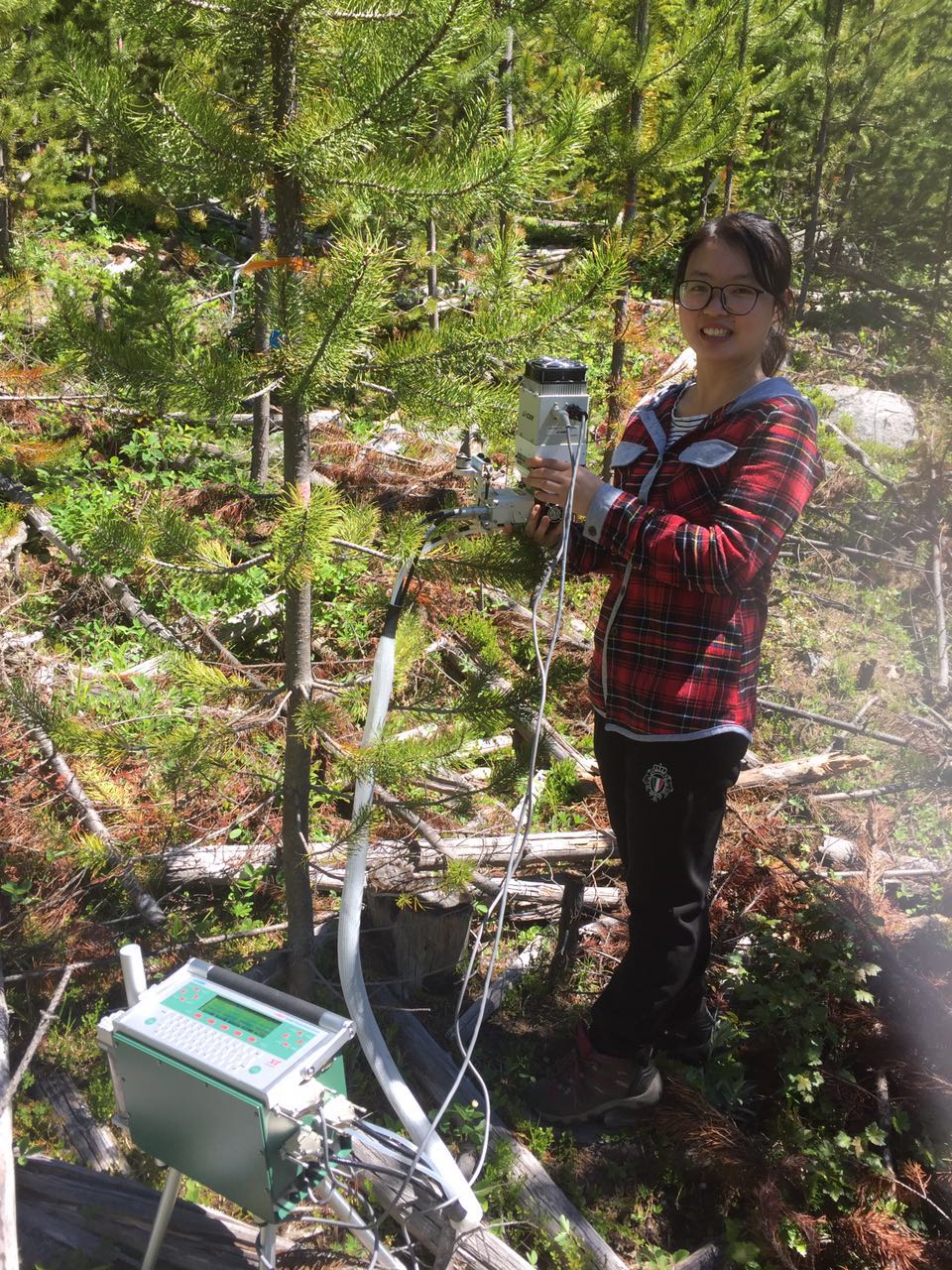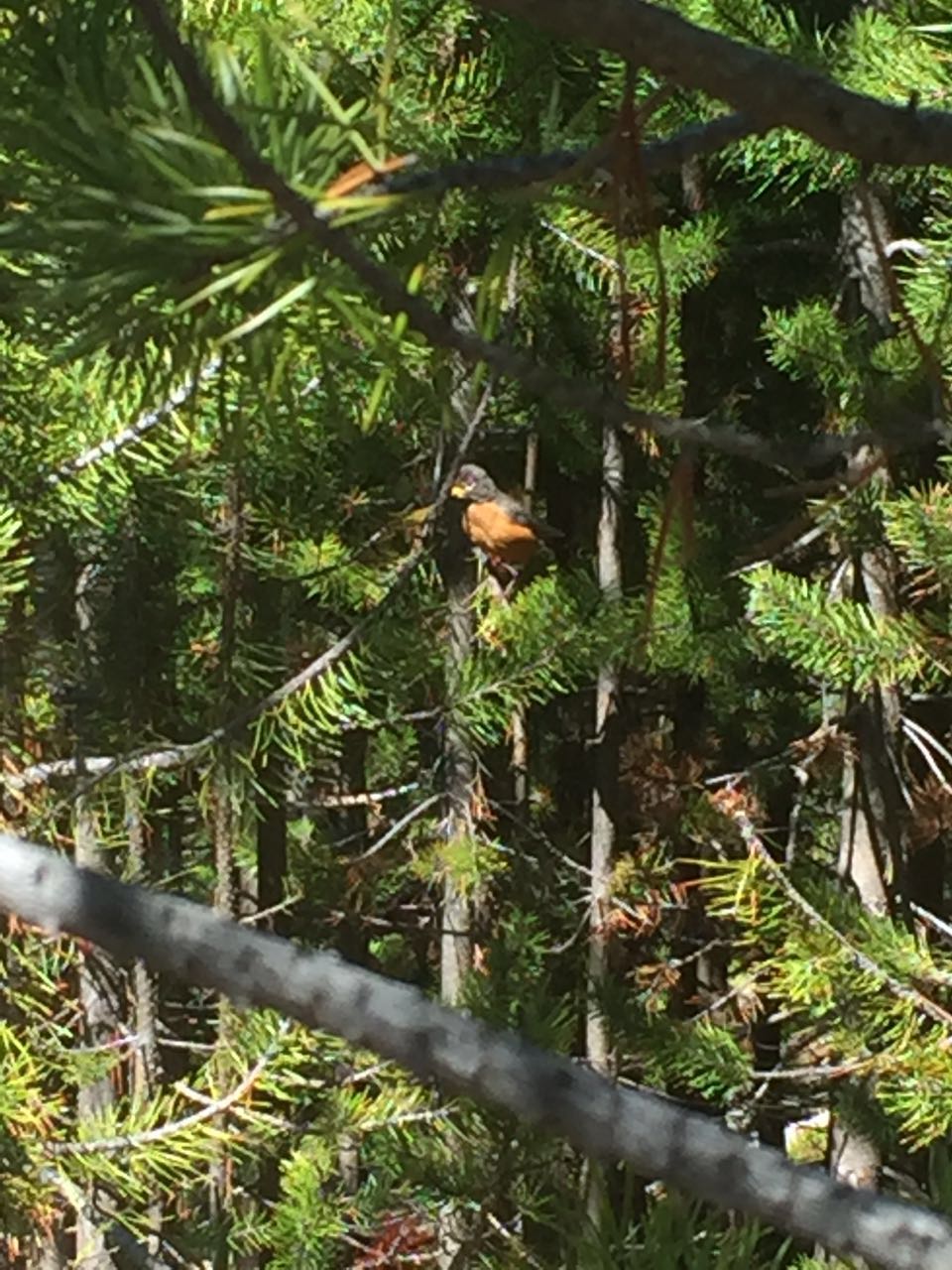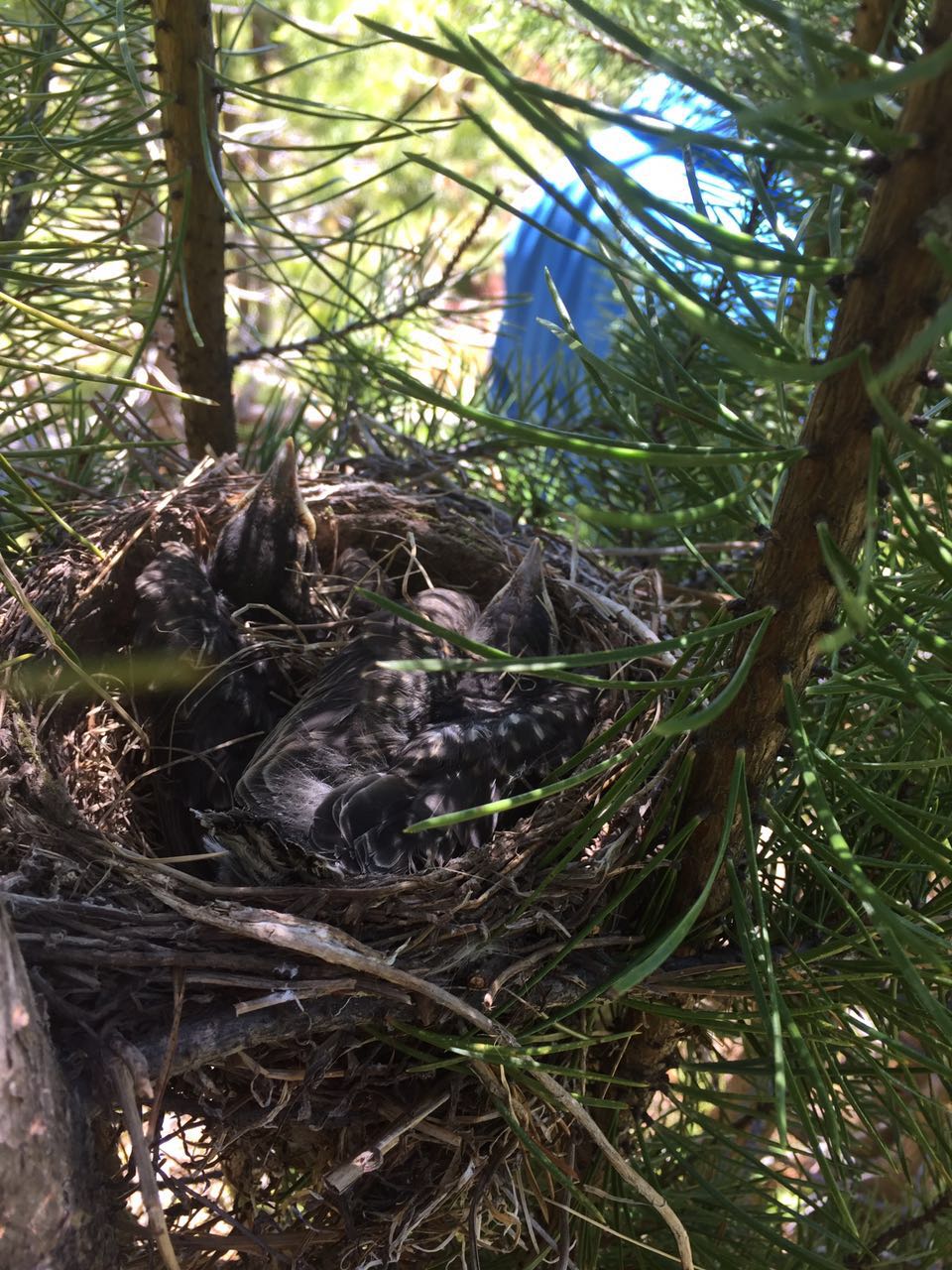Last time I spent nearly a whole day on connecting and adjusting band dandrometer sensors. On our way back, Adam suggested me to put aside the problem of band dendrometer, and measure photosynthesis and stomatal conductance instead, because data from band dandrometer are not as important as those of photosynthesis and stomatal conductance, since I can use tree monthly DBH as tree growth indicator. I strongly agreed with it, and guaranteed to him that I would give photosynthesis and stomatal conductance priority in my next field, no matter band dandrometer sensors work normally or not.
Unfortunately, the band dandrometer sensors still performed badly at this time. But I gave up fixing it, and turned to measure photosynthesis and stomatal conductance by LICOR 6400 XT, with the help of Dr. Wu. (Only Dr. Wu and I went to the field.)
We set off from Kelowna around 8:30 am, and arrived at the site at around 10:30 am. It was a sunny day.
Fig. 1 Photo of B1C at June, 26, 2017
Fig. 2 Photo of B1T1 at June, 26, 2017
Fig. 3 Photo of B1T2 at June, 26, 2017
We carried equipment to the plot T1 at the Block 1. Dr. Wu was interested in learning this photosynthesis system, so I introduced the mechanism to him, while we assembled the machine. After waiting for around 10 minutes to stabilize the machine, we started to measure selected conifer clusters. The time was around 11:00 am.
In my experiment design, I randomly select five trees per plot, and four directions (north, south, west and east) per tree at the 1.5-1.7 m height. Choosing five trees in each plot is due to the limitation of battery. I only have four batteries which can sustain field measurement up to 5 hours in total. Each clusters may take about 5 minutes, so finishing one block (3 plots) may require 300 minutes, which is equally to the sustainable time of four batteries. Assuming that there will be different solar radiation intensities and temperatures which affect photosynthesis rate and stomatal conductance in different positions, I measure the north, south, west and east sides of the tree branch clusters at the same height, to test this hypothesis. I will average the photosynthesis rate and stomatal conductance from four sides for the future analysis of scalling relationship at the leaf and individual tree level. There are less healthy branches of lodgepole pine that are lower than 1m, and I cannot measure branches that are too high for me since I have to hold heavy connifer chamber all the time, so I choose the healthy branches at the height of 1.5-1.7m.
My goal was to measure instantaneous photosynthesis rate and stomatal conductance. So I tried to set the leaf chamber environment the same with as the real outside condition. Here are the settings I used in my measurement:
(1) block temperature as 20 ℃ (It is the same with outside temperature which can be read from the machine). (2) Set light intensity as track the ambient light. (3) Set the block CO2 as 400 umol/mol. (4) Set the flow rate as 500 umol/s. (5) Control the humidity at around 30-60%.
At first I used compressed gas cylinders as CO2 supply, but then we found a severe leaking problem in the first four measurements by observing that the photosynthesis rates were negative, and the CO2 concentration at the chamber was really low (around 20 umol/mol). Then, I checked the equipment, and found that the O-ring which was supposed to stick at the conjunction between CO2 Cylinders and console was disappeared. As I did not bring any other O-ring, I decided to use air as CO2 supply. in fact, the ambient CO2 was not considered a good supply, because it was easily affected by breath. However, I found that it was acceptable in my experiments, as readouts were quite stable. So we re-measured the clusters with the wrong photosynthesis readings.
Dr. Wu and I took turns to hold the connifer chamber, because it was heavy. We measured clusters while chatted. Time flied fast. At around 1:30, we finished two plot (T1 and T2). We then had a lunch break, and continued to measure the Control plot. At around 3:00 pm, we finished the whole block (Block 1).

Fig. 4 Dr. Wu and I took turns to hold the conifer chamber.
Then, I checked the condition of band dandrometers. Sadly, I found that band dandrometers of tree No. 5, 7, 9, 13, 14, 15 were all out of position. So I adjusted them.
I download the data of sap flow, soil moisture, band dandrometer, evnironmental variables from XM 1000 datalogger and Hobo climate stations. I did not checked them at the field. At around 3:40 pm, we returned home.
Extra bonus: The nesting feathered out! Did you know who they are? the answer is American Robin! I even took the picture of the parent birds.


WaterApp is a top IoT platform designed to revolutionize water management for housing societies, industries, and government organizations. By leveraging advanced technology such as wireless water level sensors, smart water meters, and network equipment, it consolidates all water-related information into a single, user-friendly app. This robust and intuitive solution is not only tailored for large-scale operations but is also widely adopted by individual homes and residents, making efficient water monitoring and management accessible to everyone.
https://www.waterapp.in/
OSS Certification stands out as a premier provider of ISO certification services in India, widely recognized for its excellence in Third Party Inspections, Management System Certifications, and Lead Auditor Training programs.
https://www.osscertification.com/
Welcome to WoodnZen, your go-to destination for premium handcrafted wooden furniture, home decor, and kitchen essentials. Whether you’re looking for a rustic wooden table, a stylish chopping board, or eco-friendly decor, each piece is thoughtfully designed to bring warmth, simplicity, and natural beauty into your home.
At WoodnZen, we combine minimalist design with sustainable craftsmanship to help you create a space that feels balanced and timeless. Explore our collection and experience the perfect blend of quality, style, and sustainability.
https://woodnzen.com/product-category/kitchenware/home-decor/
Glass Wholesale: At KOMO Glass Trade, we understand the importance of quality in every project. Our commitment to excellence is reflected in our wholesale glass offerings. From crystal-clear tempered glass panels to innovative glass hardware, we provide a diverse range of options for both residential and commercial needs.
baby gifts that are as adorable as they are practical. From soft blankets to charming nursery décor, we have everything you need to welcome the newest addition to the family in style.
Lygon accommodationOur hotel is located quite literally on the doorstep of Melbourne’s restaurant and epicurean centre, Lygon Street Carlton. We are also at the heart of many of Melbourne’s icons, treasures and tourist attractions. Carlton itself also offers an absolute visual treat, as it is an entire suburb of glorious Victorian Architecture, which has not only been preserved, but renovated, restored and renewed.
The article describes in detail the process of measuring photosynthesis, Chill Guy Clicker, and stomatal conductance with many real-life situations. It also ends with an interesting moment about the very cute American Robin bird.
You need to be able to hear as well as see because many gravity adjustments and jumps are timed to the music.
geometry dash lite
Understanding photosynthesis and stomatal conductance often involves capturing precise leaf images to analyze plant health and responses. When working with such photos, optimizing RAW files can make a significant difference in visual clarity and data accuracy. https://skylum.com/blog/rawtherapee-vs-lightroom offers useful insights into tools that help enhance and process images without losing critical detail, which can be especially valuable for research documentation and analysis.
very interesting)
The graphics in Snow Rider are colorful and charming, adding to the festive atmosphere. https://snowriderio.io